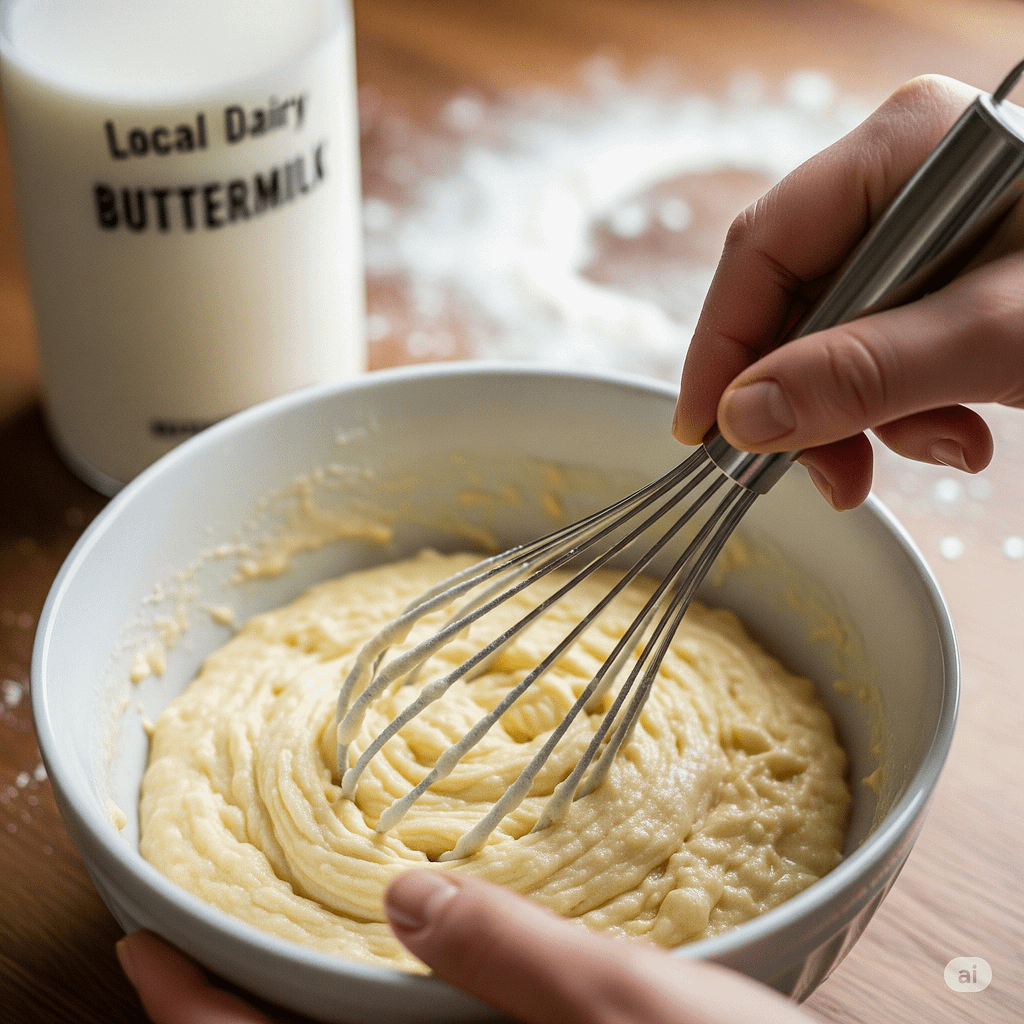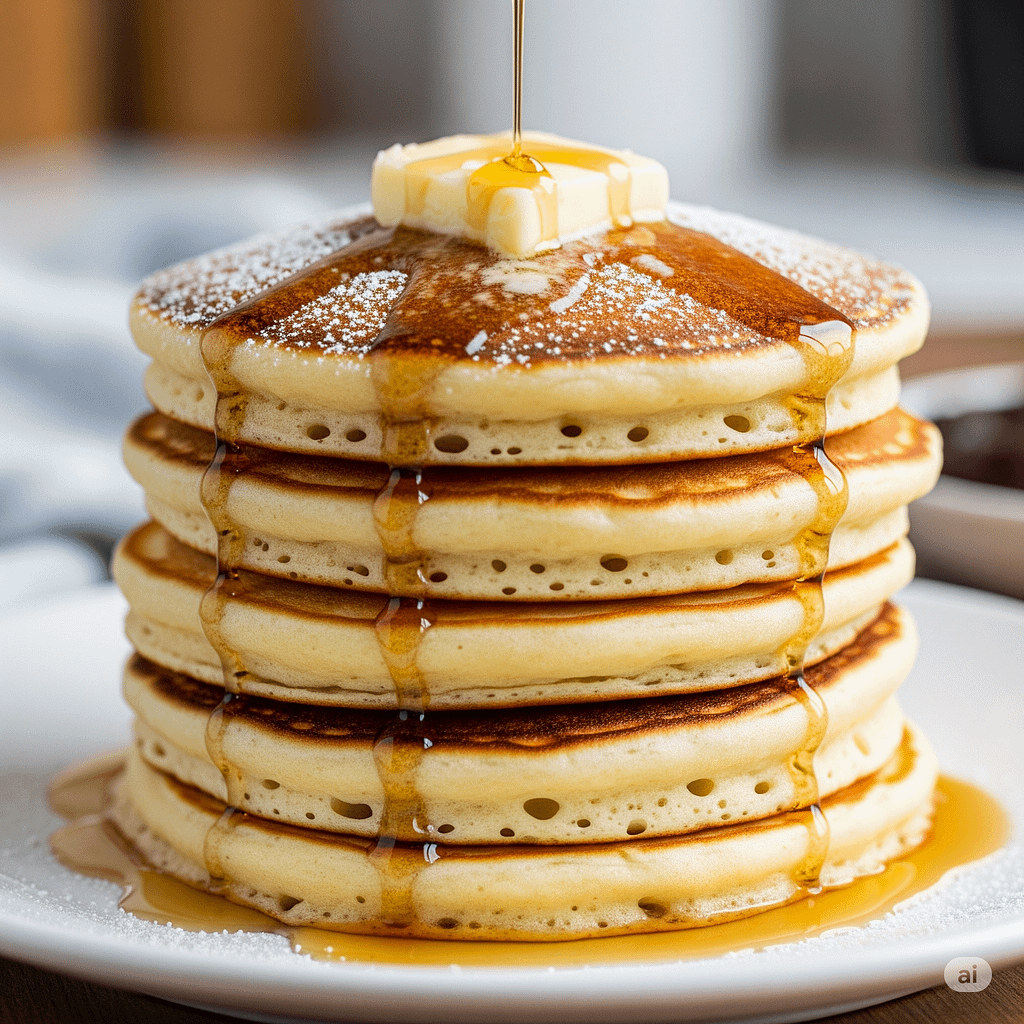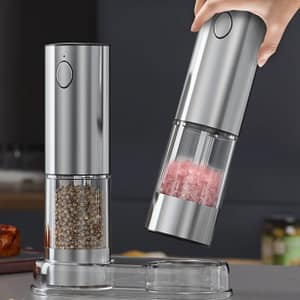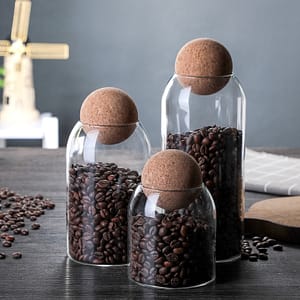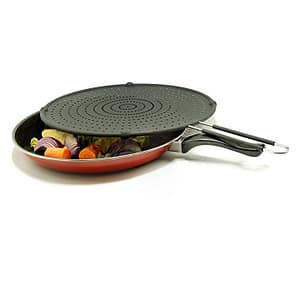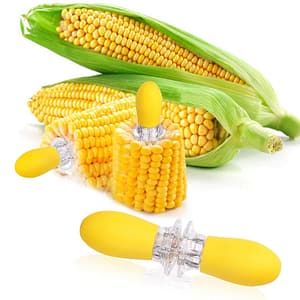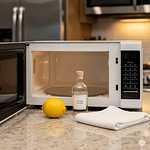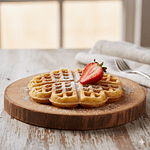
Blog Details

Baking Powder vs. Baking Soda: The Right Pancake Rise
The secret to a light, airy, and fluffy pancake lies not just in the mixing, but in the magic of its leavening agents. You’ve likely seen recipes call for either baking powder, baking soda, or sometimes both. But have you ever wondered what the difference is, and why it matters?
Understanding the unique role of baking powder vs. baking soda in pancakes can transform your breakfasts from flat and dense to tall and tender.
It’s a simple lesson in kitchen chemistry that will give you the confidence to troubleshoot your own recipes and achieve the perfect rise every time. For more tips on what to do when your pancakes don’t rise, check out our guide on Why Are My Pancakes Flat? The Secrets to Achieving Perfect Fluffiness!
The Chemistry of the Rise: What They Do
Baking powder and baking soda are both chemical leaveners, but they work in fundamentally different ways.
Baking Soda (Sodium Bicarbonate)
- What it is: A pure chemical compound that is a base (alkaline).
- How it works: It requires an acidic ingredient and moisture to activate. When it meets an acid, it immediately produces carbon dioxide gas, which creates bubbles and makes your pancakes rise.
- Best for: Recipes that already contain an acidic ingredient like buttermilk, yogurt, sour cream, or vinegar. Using baking soda without an acid will result in a soapy, metallic aftertaste.
Baking Powder
- What it is: A combination of baking soda, an acid (like cream of tartar), and a starch (to keep it dry).
- How it works: Because the acid is already included, it only needs moisture and heat to activate. Most commercial baking powders are “double-acting,” meaning they create an initial lift when mixed with liquid and a second, more powerful lift when heated in the pan.
- Best for: Recipes that don’t contain acidic ingredients, such as those made with standard milk or water.
Choosing the Right Leavening for Your Pancakes
The choice between baking powder and baking soda is dictated by the other ingredients in your recipe.
- For Buttermilk Pancakes: If your recipe uses buttermilk, yogurt, or another acidic ingredient, baking soda is the traditional and most effective choice. It will react immediately with the acid to create a tender crumb and a delicious tang.
- For Standard Milk Pancakes: If your recipe uses regular milk, a non-acidic liquid, or water, baking powder is the way to go. It will provide a reliable, consistent rise without needing an additional acid. For a delicious, nutritious alternative, you can also learn How to Make Whole Wheat Pancakes: The Secret to Fluffiness.
Using the wrong leavening can lead to major pancake problems. For example, using baking powder in a buttermilk recipe can lead to an over-risen, crumbly pancake, while using baking soda in a standard milk recipe will leave you with a flat pancake that has an unpleasant aftertaste.
Our Ingredient Checklist Generator Tool can help you keep track of your recipe’s ingredients and ensure you have the right leavening agent on hand!
Tips for the Perfect Pancake Rise
- Check for Freshness: Both baking powder and baking soda have a shelf life. To test baking powder, mix a teaspoon with hot water—it should fizz vigorously. For baking soda, mix with a little vinegar—it should bubble immediately.
- Don’t Over-Mix: Over-mixing develops gluten and deflates the precious air bubbles created by your leavening. Mix your batter just until the dry ingredients are moistened. Lumps are your friend! For more on this, check out our guide on Why Are My Pancakes Flat? The Secrets to Achieving Perfect Fluffiness!
- Rest the Batter: Let your batter rest for 5-10 minutes before cooking. This gives the leavening agents time to get to work and the gluten a chance to relax. This is also a key tip when you want to learn How to Store Pancake Batter for Easy Mornings.
- Heat is Key: Cook pancakes on a medium-hot griddle. The second heat activation in double-acting baking powder is crucial for a tall rise. Our Sweettreats Non-stick Copper Skillet ensures an even cook and perfect golden-brown finish. If your pancakes are burning on the outside and staying raw inside, you can find a fix in our post on Why Pancakes Stay Raw Inside: Fixes for Perfect Fluff.
By understanding the simple, yet vital, difference between baking powder and baking soda, you’ll be able to create perfectly fluffy pancakes that rise to the occasion every single time.
Frequently Asked Questions (FAQ)
Can I substitute baking powder for baking soda?
You can, but it requires an adjustment. Since baking powder contains both the acid and the base, you’ll need to use a larger amount—typically 3 to 4 times the amount of baking soda called for. You may also need to adjust or remove any acidic ingredients from the recipe.
My pancakes are flat. Is my baking powder old?
Old or inactive leavening is a common reason for flat pancakes. Always check the freshness by performing the water fizz test described above. Other reasons include overmixing or a griddle that isn’t hot enough, which you can read more about in our post on Why Are My Pancakes Flat? The Secrets to Achieving Perfect Fluffiness!.
Can I use both baking powder and baking soda in a pancake recipe?
Yes, many recipes call for both! This is typically to get the best of both worlds: a quick reaction from the baking soda/acid combo and a strong secondary lift from the baking powder. This balance often leads to a wonderfully light and tender crumb.
Does the type of milk I use affect the leavening?
Yes! Buttermilk is acidic and requires baking soda. Regular milk is not acidic, so it’s a perfect match for baking powder. Using the wrong combination can negatively affect the rise and flavor of your pancakes.
Will adding more baking powder make my pancakes fluffier?
Not necessarily. Adding too much baking powder can cause an overly vigorous rise that collapses, leaving your pancakes dry and with a chemical aftertaste. It’s best to stick to the recommended amount and focus on proper technique for fluffiness.
Our Products
-
Unique Book Coffee Cup – Stack of Books Design
₹1,681.00 – ₹1,695.00Price range: ₹1,681.00 through ₹1,695.00 Select options This product has multiple variants. The options may be chosen on the product page -
Salt & Pepper Electric Grinder – Rechargeable
₹2,435.00 Select options This product has multiple variants. The options may be chosen on the product page -
Glass Storage Jar – Cork Lid & Minimalist Design
₹2,563.00 Select options This product has multiple variants. The options may be chosen on the product page -
Food grade Silicone Splash Screen – Mess-Free Cooking
₹2,158.00 Select options This product has multiple variants. The options may be chosen on the product page -
Stainless Steel Corn Cob Holders – Mess-Free
₹1,086.00 Select options This product has multiple variants. The options may be chosen on the product page -
Silicone Donut Mold – Makes 6 Non-Stick Donuts
₹833.00 Select options This product has multiple variants. The options may be chosen on the product page
Products
-
Unique Book Coffee Cup – Stack of Books Design
₹1,681.00 – ₹1,695.00Price range: ₹1,681.00 through ₹1,695.00 Select options This product has multiple variants. The options may be chosen on the product page -
Salt & Pepper Electric Grinder – Rechargeable
₹2,435.00 Select options This product has multiple variants. The options may be chosen on the product page -
Glass Storage Jar – Cork Lid & Minimalist Design
₹2,563.00 Select options This product has multiple variants. The options may be chosen on the product page -
Food grade Silicone Splash Screen – Mess-Free Cooking
₹2,158.00 Select options This product has multiple variants. The options may be chosen on the product page

